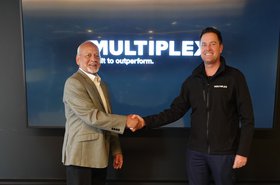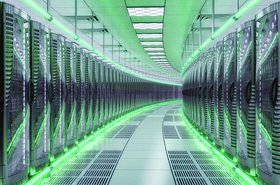As the world undergoes a monumental shift towards variable renewable energy, the data center industry finds itself at a critical juncture.
Right at the time the world is being electrified and according to the International Energy Agency, the share of electric vehicles (EVs) sold globally is projected to reach around 60 percent by 2030, global data center power demands are skyrocketing, with no signs of abatement.
In Australia for example, it felt like it took 10 years for a 1MW requirement to turn into 5MW’s. It then felt like it took 10 minutes after ChatGPT3 came out for that 5MW requirement to turn into a 50MW one.
According to the Irish Examiner, data centers in Ireland could account for 30 percent of all electricity consumption by 2030, up from around 19 percent in 2022. In Denmark, data center electricity consumption is projected to grow to 15 percent of total electricity consumption by 2030.
Meanwhile, in the US, power consumption is expected to reach 35GW by 2030, up from 17GW in 2022, according to McKinsey. Much of this historical data is without the impact of
Generative Artificial Intelligence (GAI.) In years to come, all things considered, we’re going to see all power be at a premium, including renewable power.
The renewable energy conundrum
The transition to variable renewable energy is not just a trend; it's both a necessity and a reality. Renewable energy, despite its promise, is not infinite. Solar and wind farms require vast tracts of land, and their output is subject to weather conditions.
Battery technology, while advancing, is not yet at a stage where it can store large amounts of renewable energy efficiently. This creates a bottleneck in the supply chain, making renewable energy a scarce resource until resolved.
Similarly, planning and the provision of upgraded infrastructure to support the supply of new renewable energy projects are also constrained. Exhibit A would be a recent article in Australia showcasing how hard it will be to roll out the required 10,000km of high-voltage transmission lines needed to be built by AEMO 2030.
Legislation and taxes: The inevitable future
Governments worldwide are already scrutinising the data center industry for its energy consumption. We’ve already seen large data center projects being cancelled, even though they were to use renewable energy via Power Purchase Agreements (PPAs.) And this is well before we reach a point where the global power supply is really struggling to meet the rising demand.
As the public's view shifts towards prioritising renewable energy for essential services like schools, hospitals, and homes, data centers could find themselves at the bottom of the priority list. This could lead to more stringent legislation and the imposition of new and/or increased taxes on data centers. Watch this space!
The global perspective
According to 451 Research data, Singapore, London, Dublin, Denmark and Amsterdam have already started imposing restrictions on data center construction due to energy concerns. European Union lawmakers are preparing to peg down the ballooning energy consumption of the block’s data center sector.
The legislative push is part of an effort to avert the “Earth's unfolding environmental catastrophe”, which the United Nations described recently as humankind's "suicidal war" on nature. These are early signs of a regulatory trend that will more than likely become global.
Customer and investor exodus: A real threat
The data center industry is not just contending with governmental pressures; it also faces the risk of losing key customers and investors. As awareness grows about the industry's energy consumption, customers committed to sustainability may start looking elsewhere, either inwards or to new, more innovative operators.
Investors, too, are increasingly focusing on ESG (Environmental, Social, Governance) criteria, and data centers that don't adapt may find themselves out of favor. This may all occur at a cadence that might surprise many.
GreenSquareDC's solution: Become a net-positive energy company
At GreenSquareDC, we are acutely aware of these challenges. That's why we are committed to not just reducing our energy consumption but also producing more energy than we consume.
We have recently leased 3,100ha of prime land to develop a 300MW wind and solar farm to support WAi1 in Perth. This is not just a business or marketing strategy; it's a survival tactic.
By becoming a net-positive energy company, we aim to protect our business, our customers, and our investors as the global power supply threatens to run thin.
All this said, we aren’t suggesting this is the only, nor even necessarily the best survival strategy. There are many others too, such as Microsoft apparently considering integration of small nuclear reactors into its power systems for data centers.
The path forward
Our innovative ‘Five Pillars to Sustainability’ model provides a pathway to a true net-zero future. By focusing on for more sustainable practices in high density digital infrastructure, liquid cooling, removing diesel fossil fuels from operation and committing to zero waste water, we aim to set a new industry standard, which in time will become the new norm.
According to NVIDIA founder and CEO Jensen Huang, “We're seeing incredible orders to retool the world's data centers. I think you're seeing the beginning of, call it, a 10-year transition to basically recycle or reclaim the world's data centers and build it out as accelerated computing.” Jenson is no doubt correct and we should use this time to retool responsibly and cost effectively.
Conclusion
The data center industry is at a crossroads. As the world transitions to variable renewable energy, the global demand for power is set to skyrocket. Data centers, already significant consumers of energy, need to prepare for a future where power is not just expensive but increasingly scarce.
Legislation, taxes, and the potential loss of customers and investors are real threats that the industry needs to address collectively and proactively. At GreenSquareDC, our solution lies in being a net-positive energy company, thereby being part of the solution, not part of the problem while safeguarding our business and stakeholders.
More from GreenSquareDC
-

Sponsored Singapore & Perth: A synergistic partnership in future data center infrastructure
Why Perth is Singapore’s perfect partner
-

Sponsored Is it time to replace diesel backup generators?
The path towards greener data center backup
-

Sponsored GreenSquareDC and Multiplex partner on Australia’s first fully AI enabled data center
Multiplex enters agreement as preferred contractor for GreensquareDC's revolutionary $1bn 96MW WAi1 net-zero data center project in Perth


